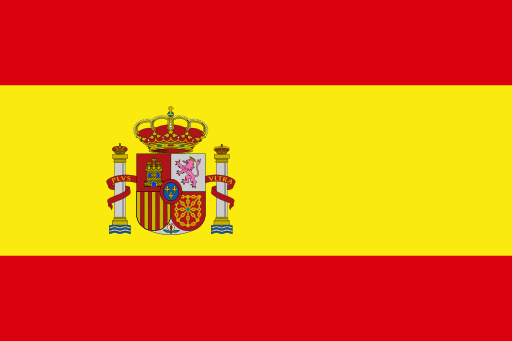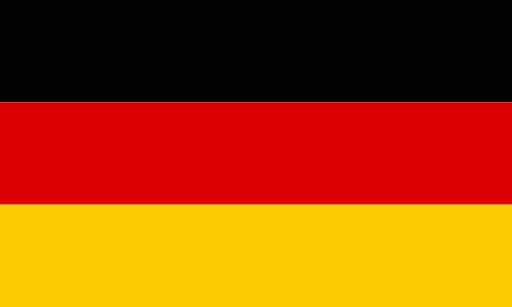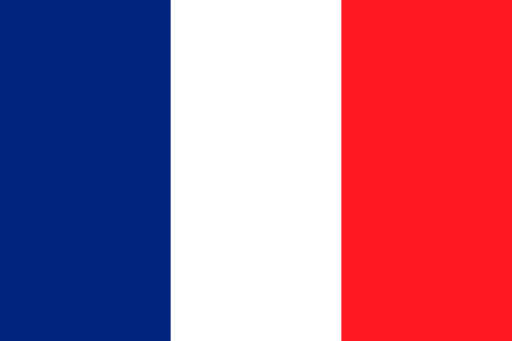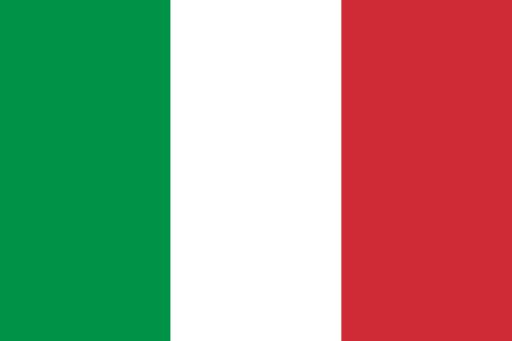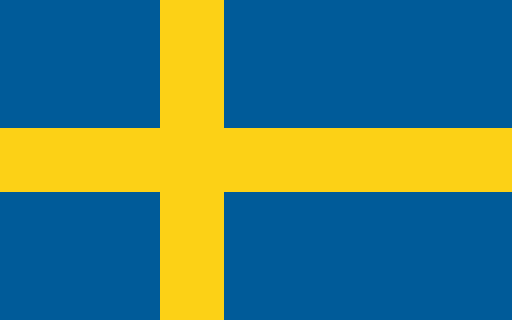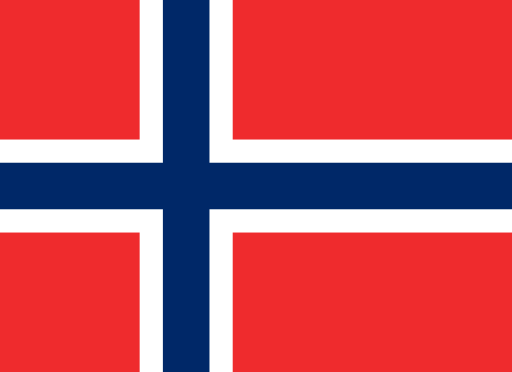|
|
 |
Articles
|
|
Astrology and Gender
|
|
|
Erin Sullivan
http://www.new-dating.com/search.php
|
The Sun and Moon in Families
Astrology is not gender-biased
Astrology is not gender-biased. The planets are not discrete energies making us do things, nor do they have sexual gender as we understand it to mean males and females. Masculine and feminine do not necessarily always refer to men and women. If those statements are true, then we cannot say, ‘The Sun is male and the Moon is female, therefore the Sun is our father-archetype and the Moon is our mother archetype.’ The common astrological conclusion reached here is based on cumulative and compounded fragments of selective information seen through the eyes and interpreted in the minds of whoever is in the thinking-mode of currency at any given time in history. It is thought that myths arise spontaneously in cultures and have mysterious parallels with other cultural mythologies even when those cultures would never have interacted or when those cultural myths arose in cultures that were not contemporaneous. There are many pre-Greek and other cultural myths that have sky-goddesses and solar heroines as well as Moon-gods and lunar masculine images.
It seems we astrologers are guilty of stretching and contriving interpretations of myths in order to render them useful to us. Very often, this works well, especially if we take myth as allegorical, but in some instances it can be badly misleading, especially if the stories are biased toward male or female, which in turn will inevitably be translated into ‘mother’ or ‘father’ or ‘daughter’ or ‘son’. In an astrology book on families, we must be scrupulous not to arbitrarily assign strict gender roles to planetary agencies, but to try to find relationships between the masculine and feminine archetypes and see how they are played out in the family dynamic among all members, and how they are transferred through individuals in the family regardless of their gender.
With respect to the symbols, Sun and Moon, in the chart, we must be even more circumspect about not stereotyping or restricting their imagery. It is far too easy to designate parental roles to each of them because we have so much material which falls beautifully into place - and there are symbolic reasons that the Moon is more akin to the maternal line and the Sun the paternal, but it is not because the Sun and Moon are respectively masculine and feminine. However, we have to remember that the origins of the assignment of masculine to the Sun and feminine to the Moon are archaic, and from those origins, all our astrological interpretations have been extrapolated and overlaid with that information.
The first consideration before delving into the symbolism of the luminaries is that they each in their symbolic self are not confined to one or other parent. To relegate the Sun to the father and the Moon to the mother at best oversimplifies the imagery and at worst distorts completely our understanding of the full human person. However - and this is a major contingency - it is very likely that because of this stereotyping we do find our parents more one than the other. That is, we might find our mother more lunar than our father and vice versa, or our lunar nature more influenced and represented by mother and the solar character more enhanced by and embodied in our father. Then, based upon the interpretation of the Sun and Moon which is traditional now, we say our mother is the Moon and our father the Sun. From that, we interpret our charts, or worse, other people’s charts, in that way. All aspects from the Moon tell us what mother was like and all aspects from the Sun dictate our father’s legacy to us. Knowing this tendency, we must include in our own bias the very real condition of our inner relationship to the outer world - we are very much a product of our own civilization and role-typing. There is a deep collusion between what we project and what we receive. It then makes perfect sense that we should relate to the Moon/mother and Sun/father doctrine. I, myself, have done it, do it and likely will continue to find it appropriate and fitting in most cases, on the archetypal level.
It does not follow, however, that we must swallow it whole or continue to do this by rote. We might consider opening the end of our bias and incorporating the possibility that the Sun and Moon are our parents in the most archetypal sense. How the Great-Mother, Hero-Father archetype is portrayed in mothers and fathers and is individuated through each person is where creative interpretation should allow for greater latitude of solar or lunar expression. That is, they are the symbols for the various ways in which we become increasingly ourselves, they are the images through which we might best picture the ways in which we experience our innate, collective human-ness. The Sun and Moon are the archetypal marriage and how we marry ourselves within ourselves is related to the Sun/Moon dyad in our horoscope. How we mediate polarities within our psyche and mind is represented in the soli-lunar relationship. For instance, Sun/Moon opposition people tend toward splits and mediation-type personalities. They experience dichotomy very intensely, and tend to cope with problems by mediating both sides, having an innate awareness of the differences between the masculine and feminine agencies; whereas, say, Sun/Moon trine people tend to have an idealized vision of the ‘archetypal parents’ inherent within their psyche, hence not as prepared to deal with the possible difficulties that are intrinsic within the masculine/feminine polarity.
The Sun/Moon dyad is essential to understanding bi-polarism and options, differences and distinctions between experiencing the same things in different ways - in other words when an event occurs, we have it ‘happen’ on many, many levels, and the Sun/Moon dyad presents [a rather simplistic] a way for us to understand two levels of experiencing the same event.
Dane Rudhyar was very clear on the Sun/Moon principle of unity in duality: the astrological Sun and Moon are partners, pairs, a couple, as it were, in relationship.His book, The Lunation Cycle, was a breakthrough in synthetic astrology. He made it very clear that planets do not exist singularly, that they are in relationship at all times. The significance of the soli-lunar cycle was found in its waxing and waning cycles - the natural laws of relationship are fluctuating all the time, manifestly and subtly.
There have been many theories about the natal lunation-cycle and the parental relationship, for example: the Sun and Moon in opposition ‘means that the parents were in discord or at best, diametrically opposed in their beliefs .’ Which, then, is extrapolated out to be interpreted in the natal chart as a psychological ‘split’ effected by this polarization of the parents (parental images of Sun and Moon ) wherein the masculine and feminine sides of the individual are not in unison. Well, when are they? Rarely, and when they are, a sense of perfect inner harmony is the result. Whether or not this is a consequence of the direct influence of one’s mother and father, is highly speculative. That it results from how we are innately and how we perceived our parents is closer, much closer to the truth. Which body, Sun or Moon, is best exemplified by mother and which is more father could vary in many ways at different times in our lives. We come back to the dialectic of nature and nurture.
There are characteristics which are distinctly lunar and others which are solar - if we consider various significant aspects of our motivating forces in life, for example: conscience; habits; responsibility; relating; ego-development; creativity, and so on, we might look upon the Sun and Moon and find in which way each of these bodies have played roles in the dominant way we achieve the end result of each of those character building, individual components.
Unity in Duality
The Sun and Moon contribute equally to our ability to have reactions to and create life-patterns in various ways, but the following list comprises a short inventory of some of the most significant aspects of the Sun and Moon ’s contribution to our character:
conscience
habits
responsibility
relating
ego-development
creativity
This is a list of keywords to be associated with contemplating the value of the luminaries in the horoscope. They are not definitions for each body. We have both a Sun and a Moon , and two parents . . . the feelings associated with all of those can be combined or differentiated.
SUN MOON
logos - name/word ennoia - seed idea
nomos - law physis - nature
social
instinctual
conscious unconscious
ego id
tradition 'now', present, current, urgent
structural spontaneous
civilized animalistic
thoughts being-ness
ideas irrational / non-rational
meaning essence
libido eros
desire desire / permeating
celestial (solar system) chthonic (earth's Moon)
regulated, constant calibrated, phased
cerebral visceral
order chaos
democratic anarchic
objective subjective
individual / cultural collective / global
The Sun and Solarism
The Sun is the centre of the solar system, and in the family of planets acts in just that way. It has high expectations of the others, and in itself, the Sun is the most powerful figure in the horoscope. As the focus, the Sun represents how our life-force was received in the family and how our self and ego develops in accord with family values. The Sun can overpower other planets in the horoscope in quite primitive ways, when the ego-nature of the individual is stronger than and disconnected from his or her conscious sense of integrity or ethics. The nature of the Sun is to radiate, outshine and expose all things to its relentless light. It is the attention seeker, the planet which defies all, even Pluto, to check its power. The Sun has authority, but equally that authority can be undermined, thwarted or subverted by other planets, as it is a rare chart that has an unaspected Sun. The authority of the Sun can also dominate other planets, not allowing them to develop their full potential - just as a too-heroic or mythic-type father can weaken his children’s power, a too-dominant Sun can obliterate gentler sides of an individual.
The Sun is the archetypal father-image, the heroic principle, and is usually associated with the male role-models in the family and the paternal line. The Dun in the chart can appear to stand alone. We must always keep in mind the Sun is never really ‘alone’ because both Mercury and Venus are never far from this central figure, but it can be segregated from the Gestalt of the rest of the horoscope, in which case there are a number of other planets retrograde. This often shows an individual with an extremely unique way of being and one who finds it very uncomfortable relating to the average standards of his or her culture - particularly his or her family system!
When looking at the Sun in the chart with respect to family issues, it is very likely to draw immediate attention to one’s own father and his unconscious imprint in one’s psychic formation. The physical presence or absence of the father seems irrelevant in many cases, because the underlying archetypal expectation of the father is stamped in the solar figure in the horoscope. The father’s unlived life can quicken in the soul of his children and thus become a powerful ingredient in the child’s personality development. This is clearly both positive and negative - if we have to bear unrealistic expectations and must consciously overcome the failures of our father, then we can suffer undue guilt and responsibility-feelings. Our Sun can be arrested in its development in order that the issues unresolved in our father can be transformed through us.
In contrast, the ‘healthy’ Sun can gently urge a child to emulate his or her father in positive ways, seeing clearly that his failures or successes are not their own problems. However, even the most basic psychological knowledge shows us that unresolved complexes in the parents are passed on for the children to seek solution. We will find that the solar legacy is one which most frequently runs down through the paternal line, and is then passed on through the next generations. Both men and women can carry paternal legacies - men identify more with the male principle through the Sun with respect to their sense of male-identity and desire to build, conquer and protect, while women utilize the solar legacy in their desire to control and conduct lives independent from the emotional zones of families and relationships.
Aspects formed by the Sun to other planets are often a literal image of how we perceived our father and his influence in our heroic - productive - life. As mentioned previously, the Sun needs challenge to develop its potential characteristics and assist in the development of the ego. Usually, it is the father who enacts this kind of role-model for the children by being elusive, exciting, unpredictable in his appearances, big, strong, foreign to the nest, influential in the governing of the family, et cetera. This structure may appear to be archaic in its description, but then archetypes are out of time and lie at the base of our social and personal lives. Sometimes the father is strong in influence by his absence and conversely weak by his presence. Aside from our ‘dad’, we have a celestial-father image in our psyche, and the Sun shows what that is.
Individuals with the Sun rising or in the MC of the chart experience extraordinary pressure to succeed in whatever endeavour is undertaken. This can be fun if the person is allowed to slowly develop his or her own interests and is allowed to show-off on a regular basis all that she has accomplished! If, however, the pressure is toward a skill or interest of the father’s and not instinctive, or the expectation is literally received from the father, then the solar principle feels thwarted and the ego develops a shell or crust to protect the deeper Self from being hurt or damaged by this transgression of natural law. The Sun strongly placed in the angles like this does indicate a powerful psychological connection to the father and the person carries the father with them into everything that is presented to the world.
An unaspected Sun is an indication that the individual will need to find a completely new way of using his or her ego to find something outside the family dynamic to pursue. There is a maverick energy with unaspected planets, and it often indicates that a ‘new soul’ has come into the family to break professional, social hierarchies. The unaspected Sun person will find it exceptionally difficult to conform to the family, but will attempt to do so until a turning point occurs, allowing them to set off in their own direction. Often their father has not been traditionally paternal, has been a ‘friend’ or completely absent by circumstances or choice. There is usually a very strong longing for a father, or father figure, but because there is no aspect from the Sun to another planet, there is no clear image of the father in the psyche. Hence, the person has to become their own father, or to become their own authority. All the words that stem from the Latin auctor - author, authority, authenticity, and all derivatives are especially significant for unaspected solar people. They must find inner validation rather than seeking it from without. This often means long periods of wandering, looking, seeking and searching for purpose and direction in life.
Solar Themes in Family Dynamics
To preface this delineation, remember that these are themes, that is, they can manifest in either direction, overtly or covertly. They can also be made obvious by negation - for example, a Sun-Jupiter theme can be so inverted in one person that it results in one family member being very introverted, never travelling far from home, having narrow viewpoints and very little in the way of social energy, while another member of the same family travels widely, has a variety of activities, enacts for the others the exciting, dramatic and expansive life. Likewise, a Sun-Saturn theme can run from being terribly successful and goal-oriented to being downtrodden and melancholic, not fulfilling his or her fullest potential. Remember in families one can find a both/and situation - functional families are not static, are always flowing and continually finding new ways of accommodating, communicating, balancing, compensating and surviving. Truly and severely dysfunctional families do not allow for change, flux or dynamic action and the homeostatic principle is very strong and there is always an ‘identified patient’, someone who is carrying the illness of the family-theme - the scapegoat, the black sheep or the circuit breaker. With that mind, these are two examples of the energetic solar themes of family dynamics:
Sun/Mars (including solar aspects with Aries)
The family is heroic and adventurous, and often, competitive energies flow through the family psyche. This can produce high-achievers (or counter with strong conservatives and depressives if Saturn is part of the theme), executive types and self-made men and women. Each individual’s ego development occurs in spurts and erratic characteristics abound; often, one member is the leader, the ‘shining one’ while another appears to haunt or darken the family collective. Individuating through the Sun/Mars family requires brute force - either mental or physical; the timid don’t survive well emotionally, while innovators who have strong originality and a thick skin do. Wanderers, mavericks, renegades and individualists are lovingly, though occasionally grudgingly, respected. If combined with Jupiter, there is a manic-depressive atmosphere where someone is always countering or balancing the extremes - this family usually produces a mediator-type who trots back and forth or who suffers because of enmity between two others in the family whom she or he loves equally. One member may have to withdraw in order for the whole family to survive as a system. The balance of the family dynamic is tenuous and spark-filled, creating a sense of balancing and counter-balancing all the time. This family attracts nurturers, carers and usually, quite stable relationship-partners to counter-balance the over-aggressive energy.
Sun/Uranus (including solar aspects with Aquarius)
This is a signature found in the archetypal disengaged family we read about in the chapter The Family as a System. There is so much encouragement to be oneself at as early an age as possible that often the necessary aspect of repression and civilisation for the sake of society is ignored completely. This is a highly unconventional signature for any group of people who wish to work together, unless it is via the Internet, or on the intercom, Cellnet or via satellite transmission. One would not think of this family-theme as ‘warm’, loving or overly-concerned about the feelings of others in the group. This does not mean that it is none of those things, has no feeling-tone or is sociopathic, but it will not appear to be a family in concert that way. The best of the solar/Uranian energy encourages freedom of thought, action and in relationships. The path of finding one’s own way is well-developed and those whose families have this theme might find it very difficult indeed, if they have subscribed to a more conventional, Norman Rockwell-type vision. Certainly, personal ego development is encouraged, but in fact it is deeply threatening to the Sun/Uranus family because there is an element of competitiveness necessary to individuate. What others might regard as eccentricity is regarded as a normal and valued trait. What appears chaotic or weird to visitors from outside the family is very likely a security-system for the individuals within it. The privacy of each person inside a family of this nature ensures that no-one really knows who the other is and each thinks he or she is the ‘sane’ one and everyone else is the eccentric - while, in fact, each are all quite mad in their own way. Of all the human attributes, thinking is most meritorious; creativity and innovation is valued far above order; autocracy is essential to self-discovery and individuation requires repeated departures and returns to and from the matrix of the family. The inconsistency in itself is a form of stability, however, for any one individual who needs more attention, more nurture, more assurance, this is a very uncomfortable home and even a run-of-the-mill kind of emotional need can be seen as a cloying, infantile behaviour. There does appear to be mixed messages floating around all the time - ambivalent feelings abound in the Sun/Uranus collective, and if this grouping produces a distant, cool and detached aura, then eventually it will freeze itself out of existence - which often is staved off by importing a Watery, emotionally expressive, yet cool person via marriage or through partnership.
The Moon and Lunacy
In the family of planets, the Moon is two things: mother and baby. It is the needy one and the caring one. The Moon is the ‘planet’ which gets attention by alternately whining, manipulating, insinuating, being moody, helpless, infantile, subtle - or affects other planets in the chart by being powerfully silent and suggestive, helpful, cautious, concerned, nurturing and protective. Its nature is to impose itself on other more linear planets in emotional ways - feelings, irrational behaviour and implications can even unsettle old Saturn! Although the Moon is reflective and implicitly related to the Sun (all its light is solar-reflection, or earth-shine) it is the most holistically influential body in the family of planets - and in the horoscope when viewed for family matters.
The Moon is the mother-image, the adaptive principle, and is usually, but not always, associated with the females in the family - mother, aunts, sisters, and the maternal line. The Moon is the container of the infant, its home during the formation of its body and deep instinctual nature. Lunar responses to life outside the womb can be traced back to the short intra-uterine experience. In the womb we are our mothers, we are not separate, but one. Her nourishment is ours, her heart-beat is tuned with ours, her emotions affect us, her body holds our body. This is the most significant body in the horoscope with respect to family dynamics, for it is the maternal line which acts as the conduit for generational transition. The Moon should be looked at as the primal, instinctual response to one’s life-force. The Moon can be the weakest link in the chart - one can be strong, heroic, creative, amusing, innovative, brilliant and healthy but can be emotionally barren, hostile, tortured and impoverished.
The Moon in the horoscope shows how our environment affected us from the very instant of birth - and from that premise, how we perceive our environment and the people in it. The first contact with the outside world is meant to be the receiving arms of our mother. The infant, longing for reconnection to its source of life, is infused with this primal imprint all the rest of life. The mood of the moment in astrology is the Moon - the Moon in the natal chart is the mood of life for us!
The Moon holds images of the fourth house, and in the fourth house lies the ancestral pool - not just the mother but the blending of maternal and paternal lines. This blend is held in the alembic of the fourth house, or the womb of the horoscope and if the Moon is a very strong planet, then there are personal ancestral issues to be delved into. Only in conversation with ourself (or with a client with a strong lunar link) can we determine to what degree this is a maternal issue alone.
One very significant pattern in which the Moon can be problematic, and actually talks of both parents, one by absence and the other by over-prominence is the ‘amputated Moon ’. When the Moon is separated from the rest of the Gestalt of the horoscope - the handle of a bucket formation, it is very difficult for the person to be able to connect his or her feelings with behaviour, either of his or her own, or others. This lunar oddity usually indicates that there was a serious problem with the feminine in the family. It can indicate the only male in a family of women, or a family in which the father was particularly weak and ineffective. Men with this amputated Moon find it easier for women to carry their feelings than for them to be responsible for their own. It is absolutely necessary for the split-off Moon person to make every conscious effort to practice discovery of feelings. A typical scenario could run thus: a man has no idea what a woman is feeling and charges ahead with ideas, plans, expectations and assumptions and is shocked, horrified and dismayed to discover that she has no idea what he is wanting or thinking. Another issue could arise when the man is so disconnected from his own feelings that he damages the women around him by unconsciously ‘using’ them or their feelings to his own end.
Women who have this configuration find that they are oddly out of synch with their own feelings, they have tremendous intuition about other people, because they have likely grown up in an environment wherein they had to divorce their own feelings on behalf of looking after their mother’s or their sibling’s feelings. They find that they have a delayed reaction to emotional situations and are dissonant within themselves. These women are incredibly capable, reliable and have the potential for taking on very solar work, but suffer quietly, wondering why no man or woman will come to look after them.
The segregated Moon is like a hook, other people can hang their feelings on it, weighing it down, leaving no room for the owner of it to claim their feelings. This can be sad or it can be so unconscious that only their most intimate friends and particularly, lovers will be aware of it. The image that comes to mind is this: if we were to fold the horoscope in half, thus ‘folding’ the Moon back into the other half of the chart, it would be integrated. On an emotional level, this needs to be done, and can be through conscious effort and awareness. There will always be an admirable capacity for emotional clarity and objectivity with this position, but its pathology is coldness, lack of empathy and delayed responses. It could be an ideal place for the Moon if it were treated in this way, using the metaphor of folding the chart in half, thus achieving integration.
|
Erin Sullivan
http://www.new-dating.com/search.php
|
|
|

